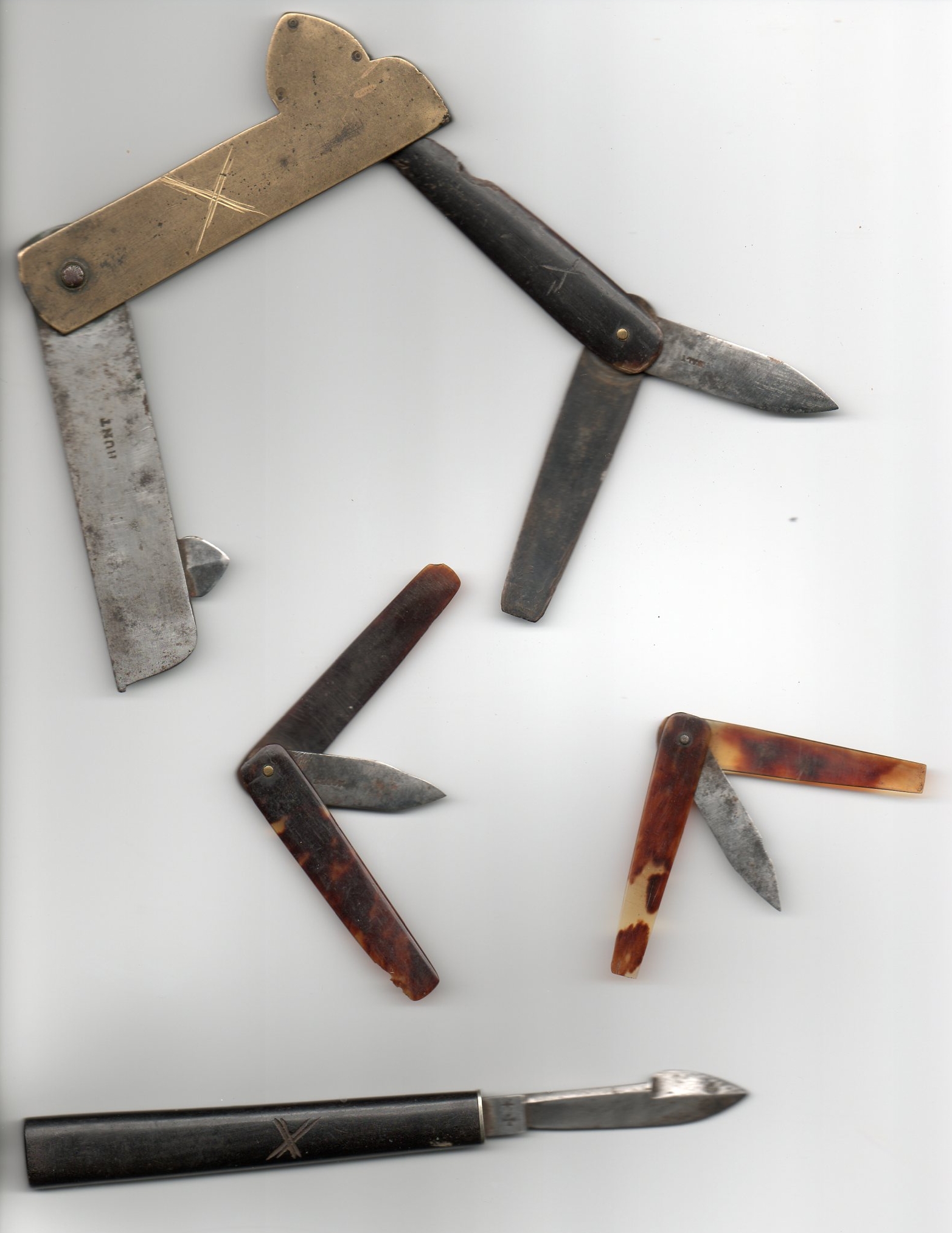
These are some of the instruments used by Augustine as a vet: a fleam (top left) and lancets. These were used for the bloodletting of horses and other animals. Augustine had a long association with horses as an ostler and groom, so we can assume that he continued to work with horses as a vet. The blade of the fleam was placed over the jugular vein of the horse's neck and inserted with the help of a fleam stick. This was a heavy wooden club used to drive the blade in with a quick motion (so the horse didn't know what hit him). Augustine probably placed a sheet over the animal's head so it couldn't see what was coming!
The design of the fleam, with the small blade at right angles, would ideally result in a rapid penetration of the vein with minimal risk to the operator and minimal dissection of the subcutaneous tissues. The smaller lancet blade was inserted into a vein by pressing down with the thumb and for this reason are referred to as thumb lancets. These smaller blades would have been used on smaller animals and members of the family. Once the desired blood was drained from the patient, the operator would place a pin through the edges of the incision. A figure eight of tail hair or thread would then be placed over the pin to retain closure.
The Theory of Blood Letting
The practice of bloodletting, or phlebotomy, dates back to antiquity. The followers of Hippocrates in the
fifth century B.C. strongly believed in bleeding patients, and it is likely that this was done in Egyptian times and
probably even before that. Early civilizations may have been inspired by seeing bats remove blood from animals, hippos
scratching on trees until they bled, and other animals scratching at diseased body parts for relief. Additionally, there
were many human examples of bleeding such as spontaneous nosebleeds and menstruation that had to be explained. It is perhaps
these signs in nature that led early civilizations to put it all together: bleeding must have some beneficial value.
From these simple observations came increasingly complex theories as to why bloodletting was necessary and how it worked. An early theory was that there were four main bodily humors: blood, phlegm, black bile, and yellow bile. An imbalance in these humors was postulated as the need for bloodletting, purging, vomiting, etc. Virtually every known medical condition at one time or another was treated by these methods. Bloodletting was used to treat everything from fever and madness to anemia and debility. Leeches were often used on sick patients and Augustine may have resorted to using them on Jane and Charlotte.